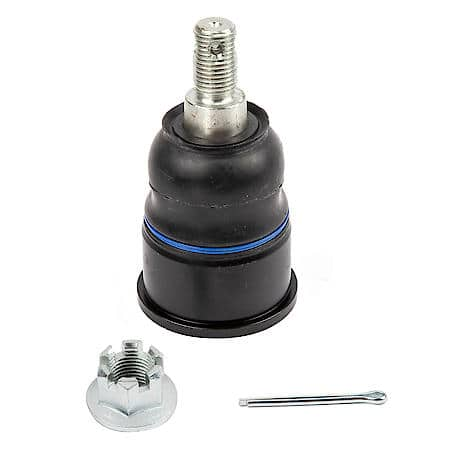- Shop All
- Replacement Parts
- Performance Parts
- Accessories
- Oil & Fluids
- Special Offers
- Speed Perks
- Advice & How-Tos
- Project Guides
Ball Joints
When it comes to maintaining the health of your vehicles suspension and chassis, we recognize the importance of maintaining your vehicle's suspension system, especially the ball joints that ensure smooth steering and alignment. Your car's lower ball joint is crucial for connecting the control arm to the steering knuckle, allowing for up-and-down motion while keeping the wheel in line. If you're experiencing clunking noises, steering wheel vibration, or uneven tire wear, it's likely time to check or replace your ball joints.
We offer an extensive selection of ball joints, including lower ball joints from trusted brands, ensuring a perfect fit for your specific make and model. Alongside the joints, we provide essential components like the Ball Joint Boot for protection against dirt and moisture, Ball Joint Bolts for secure installation, and Control Arm Ball Bushings to maintain proper alignment and reduce friction. For those needing a comprehensive solution, our Ball Joint Bolt Kits are designed to streamline your repair process, offering all necessary hardware in one package. Choosing the right ball joint not only affects your ride quality but also the longevity of your suspension system. At Advance Auto Parts, we equip you with the parts and knowledge to keep your vehicle running smoothly and safely.
Same Day Home Delivery
Not Available For This Item
Home Delivery
Not available for this item
Same Day Home Delivery
Not Available For This Item
Home Delivery
Not available for this item
Same Day Home Delivery
Not Available For This Item
Home Delivery
Not available for this item
Same Day Home Delivery
Not Available For This Item
Home Delivery
Not available for this item
Same Day Home Delivery
Not Available For This Item
Home Delivery
Not available for this item
Same Day Home Delivery
Not Available For This Item
Home Delivery
Not available for this item
Same Day Home Delivery
Not Available For This Item
Home Delivery
Not available for this item
Same Day Home Delivery
Not Available For This Item
Home Delivery
Not available for this item
Same Day Home Delivery
Not Available For This Item
Home Delivery
Not available for this item
Same Day Home Delivery
Not Available For This Item
Home Delivery
Not available for this item
Same Day Home Delivery
Not Available For This Item
Home Delivery
Not available for this item
Same Day Home Delivery
Not Available For This Item
Home Delivery
Not available for this item
Same Day Home Delivery
Not Available For This Item
Home Delivery
Not available for this item
Same Day Home Delivery
Not Available For This Item
Home Delivery
Not available for this item
Same Day Home Delivery
Not Available For This Item
Home Delivery
Not available for this item
Same Day Home Delivery
Not Available For This Item
Home Delivery
Not available for this item
Same Day Home Delivery
Not Available For This Item
Home Delivery
Not available for this item
Same Day Home Delivery
Not Available For This Item
Home Delivery
Not available for this item
Buying Ball Joints
Frequently Purchased Ball Joints
What is the average replacement cost of Ball Joints?
Does Advance Auto Parts carry Ball Joints for my vehicle?
What are some of the top-rated brands for Ball Joints?
Which brand offers premium Ball Joints?
What brand of Ball Joints offers the lowest cost options?
A bad ball joint can manifest several symptoms, each indicating a potential problem within your vehicle's suspension system. One of the most common signs is a noticeable clunking or knocking sound, especially when driving over bumps or rough terrain. This noise results from the ball joint being loose or worn out, causing it to rattle inside its casing. Additionally, you may experience unusual or uneven tire wear, which occurs because misalignment caused by a faulty ball joint leads to improper tire contact with the road. Another critical symptom is a vibrating steering wheel. This occurs due to the joint's inability to maintain stability, resulting in increased play in the steering system. Finally, compromised handling or steering responsiveness can indicate a failing ball joint, making your vehicle feel unstable or difficult to control, particularly during sharp turns or quick maneuvers. Recognizing these symptoms early is vital to ensuring your vehicle operates safely and maintaining the longevity of your suspension components.


















